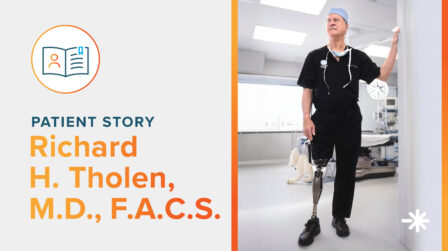Scheuermann’s Kyphosis
Rounding of the upper spine due to an abnormal bone growth of at least three consecutive vertebrae.
Understanding Scheuermann’s Kyphosis
Scheuermann’s kyphosis is a type of spinal condition that causes rounding of the upper back due to abnormal bone growth of at least three consecutive vertebrae.
With Scheuermann’s kyphosis, individual bones of the spine can become wedge-shaped, causing a hunchback or slouching posture. Males are twice as likely to develop this type of kyphosis and it is usually diagnosed during adolescent growth. In fact, it may occur along with adolescent idiopathic scoliosis.
Diagnosis and Symptoms
It is normal to have some forward curve to the upper spine, typically between 20 and 40 degrees. If Scheuermann’s kyphosis is suspected, the physician can check the spine on an X-ray. The doctor may choose to monitor the curve or suggest treatment, depending on remaining growth and underlying conditions. Some symptoms may include fatigue, back pain, or chest pain.
Treatment
Many patients do not experience serious problems, but in severe cases, and if left untreated, kyphosis can cause damage to the spine and other areas of the body.
There are three proven treatments for kyphosis: — monitoring, bracing, and surgery. Your physician will recommend which one of these treatments is appropriate based on the severity of the curve and age of your child.
- Bracing can be effective in many cases to stop the progression of kyphosis, and treatment will be needed until your child stops growing. The goal of bracing is to prevent additional kyphosis by hyperextending the spine to reduce wedging of the affected bones. Kyphosis braces are usually worn 16-20 hours per day and removed for all contact sports until the child is through puberty.
- Physical therapy may also be suggested to stretch and strengthen the muscles of the spine and core, concentrating on extension exercises.
- Surgery is also an option your physician may discuss. Oftentimes, surgery may be recommended if bracing was ineffective or the curve is being treated after puberty.
Treatment for kyphosis should be considered a team approach that involves the physician, orthotist, physical therapist, your family, and most importantly the patient.
Latest Updates
Subscribe to stay up-to-date on our latest posts.


